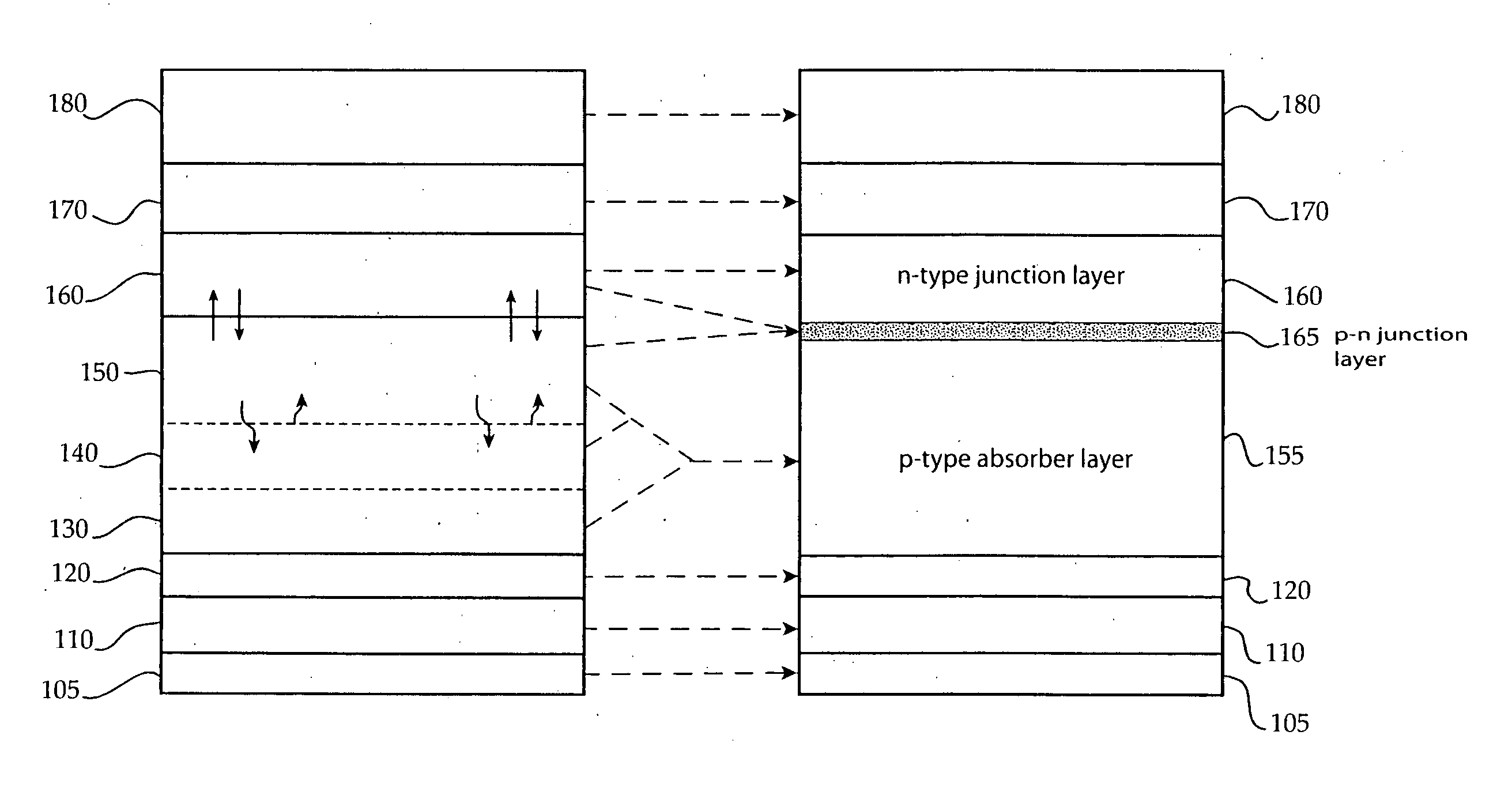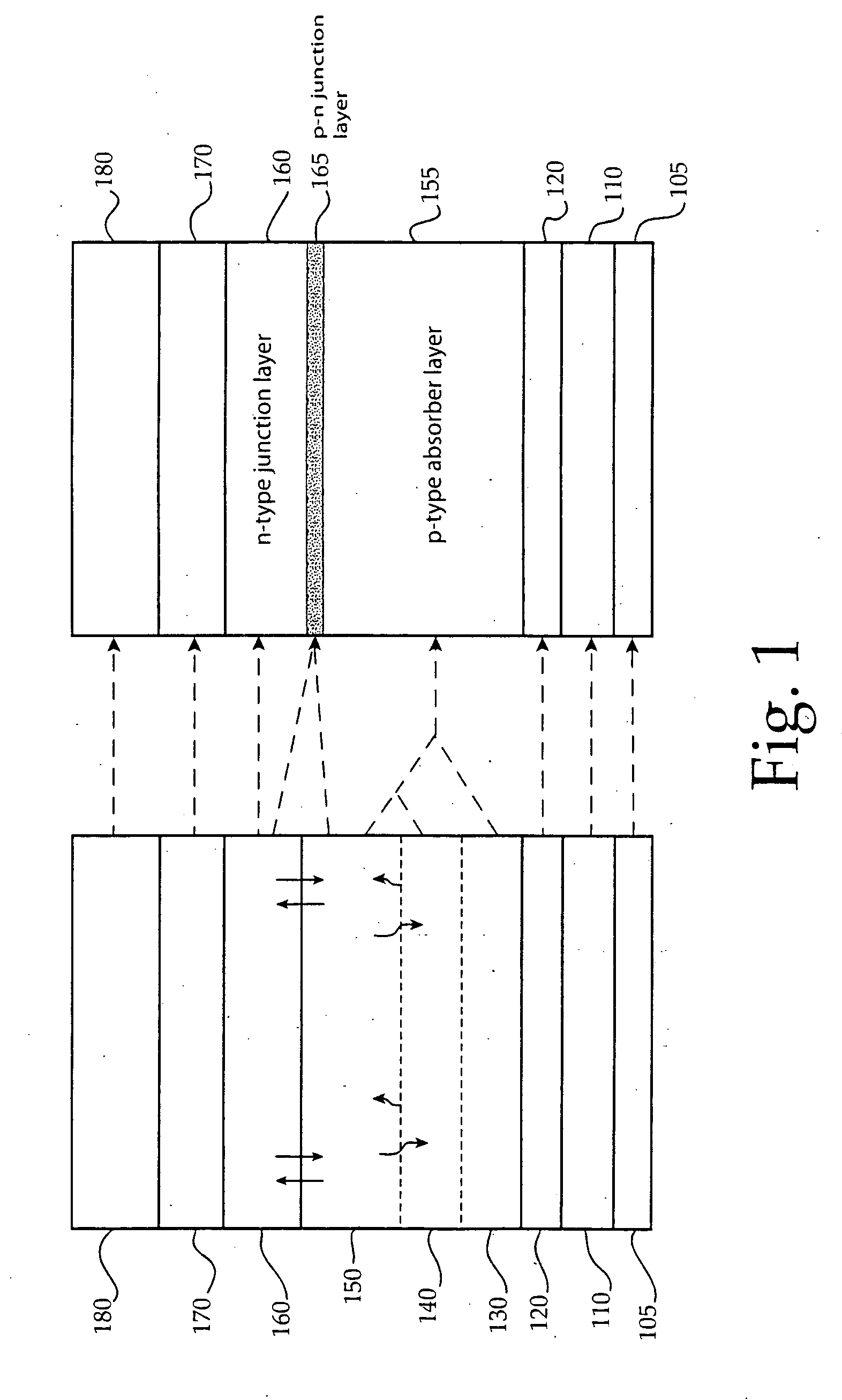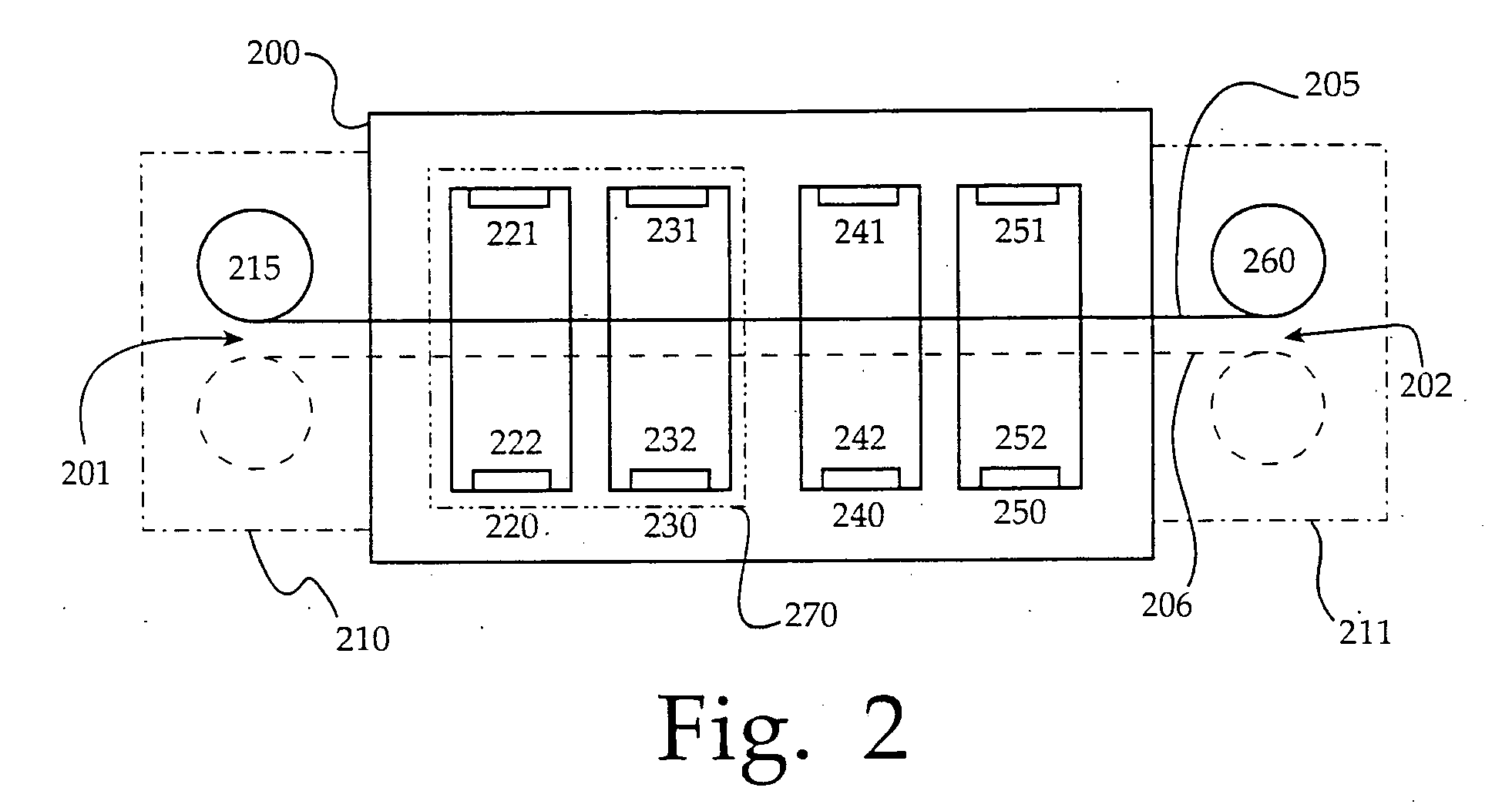Method and apparatus for forming a thin-film solar cell using a continuous process
a technology of continuous process and thin film, applied in the field of photovoltaics, can solve the problems of insufficient reduction of product cost, difficult scaling into commercial scale processes, and efficient thin film manufacturing process, so as to prevent chemical cross-contamination, prevent cross-contamination, and optimize recovery
- Summary
- Abstract
- Description
- Claims
- Application Information
AI Technical Summary
Benefits of technology
Problems solved by technology
Method used
Image
Examples
Embodiment Construction
[0021] The present invention employs a new production apparatus in order to produce photovoltaic devices. The particular apparatus will depend upon the specific photovoltaic device design, which can be varied. FIG. 1 shows a photovoltaic device or thin-film solar cell 100 comprising a substrate 105, a barrier layer 110, a back contact layer 120, a semiconductor layer 130, alkali materials 140, another semiconductor layer 150, an n-type junction buffer layer 160, an intrinsic transparent oxide layer 170, and a transparent conducting oxide layer 180. It will be recognized by one skilled in the art that the thin film solar cell may comprise fewer layers and still function according to the invention. For instance, the device need not have alkali-materials.
[0022] Two variations of an integrated production apparatus are provided. In each case, a series of treatment chambers are provided, where each chamber provides a specific treatment regimen in order to produce a specific layer deposit...
PUM
| Property | Measurement | Unit |
|---|---|---|
| thickness | aaaaa | aaaaa |
| temperature | aaaaa | aaaaa |
| pressure | aaaaa | aaaaa |
Abstract
Description
Claims
Application Information
 Login to View More
Login to View More - R&D
- Intellectual Property
- Life Sciences
- Materials
- Tech Scout
- Unparalleled Data Quality
- Higher Quality Content
- 60% Fewer Hallucinations
Browse by: Latest US Patents, China's latest patents, Technical Efficacy Thesaurus, Application Domain, Technology Topic, Popular Technical Reports.
© 2025 PatSnap. All rights reserved.Legal|Privacy policy|Modern Slavery Act Transparency Statement|Sitemap|About US| Contact US: help@patsnap.com



